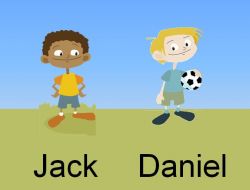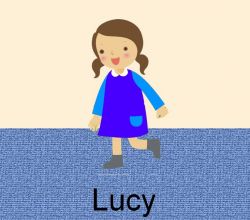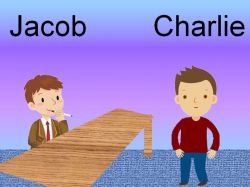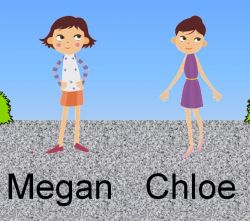Media
Research study: Developing an educational programme for primary schools to shape positive attitudes towards mental health, help seeking and psychosis.
Contacts:
SPRiG Director: Dr. Kathryn Greenwood
Abstract of Project
Discrimination and stigma are major barriers to social inclusion and involvement for people with mental health difficulties. Research has shown that people with a better understanding of mental illness are less likely to stigmatise or discriminate. Public education campaigns about mental health difficulties are widespread and the UK has included the promotion of mental health as one of its key public health policies. However, it is important to develop programmes specifically targeting young people, as they are posited to show more discriminatory behaviours than the rest of the general public.
An alternative approach of psychosocial education at primary school age may be more effective at minimising the development of the discriminatory behaviours shown by teenagers and the general public. An intervention at this age could focus on the creation of an inclusive schema that reflects a psychosocial understanding of mental health, rather than attempting to change pre-existing negative stereotypical beliefs, prejudicial attitudes and discriminatory behaviours.
In order to develop an intervention programme, it is necessary first to explore the understanding of mental ill health and the emergence of stigma in primary school aged children, which is the aim of this study. Six focus groups for children in years 3-6 were conducted in two primary schools in South East England. The children were shown four vignettes that depict experiences that represented a spectrum of mental health problems. These were followed by a series of discussion questions designed to elicit themes around children’s knowledge and attitudes towards mental health difficulties.
Introduction to cartoons
These cartoon vignettes were used as part of a study entitled 'Exploring understandings of mental health, behaviour and language in primary school aged children'. They were shown to focus groups of children aged 7 to 11 and were followed by a series of discussion questions designed to elicit themes around children’s knowledge and attitudes towards mental health difficulties.
The four vignettes were developed to depict experiences that were seen to be an indication of mental health problems. These represent a spectrum of mental health conditions; from a simple phobia (dog phobia) through to a depressive episode, Obsessive Compulsive Disorder (OCD) and psychosis, which is representative of a more severe and enduring mental health problem.
Mental health vignette powerpoint presentations:
Phobia
OCD
Psychosis
Depression
These vignettes are not to be replicated without the permission of the authors Tracy Johnson and Dr. Kathryn Greenwood.
To start the audio track on the first slide of the vignettes, click on the audio symbol in the top left hand corner.
Measures
CHOICE: A service user–led outcome measure of CBT for psychosis
Publication: K.E. Greenwood et al. (2010). CHoice of Outcome In Cbt for psychosEs (CHOICE): The Development of a New Service User-Led Outcome Measure of CBT for Psychosis. Schizophrenia Bulletin, 36(1), 126-135.
Contact:
SPRiG Director: Dr. Kathryn Greenwood
Abstract
Outcome measures for cognitive behavior therapy for psychosis (CBTp) have been derived from pharmacological studies, focusing on symptom change rather than outcomes such as distress or fulfilment. This study presents the development and psychometric properties of a new outcome measure (CHoice of Outcome In Cbt for psychosEs [CHOICE]), which reflects more strongly the aims of CBTp and the priorities of service users. Service users who had received CBTp participated in focus groups to discuss their outcome priorities, using a topic guide generated by a panel of experts in CBTp. A qualitative thematic analysis was undertaken to reach consensus on themes and generate items. Response scales were constructed for 3 dimensions: severity, satisfaction, and importance. The resulting questionnaire was piloted with service users who had not received CBTp, stratified by service type, ethnicity, and first language to ensure that it was user friendly and applicable prior to CBTp. The psychometric properties of the measure were then examined in a sample of 152 service users. Twenty-four items, and 2 of the dimensions (severity and satisfaction), were retained in the final measure. A factor analysis revealed a single psychological recovery factor interspersed throughout with both CBTp and recovery items. Test-retest reliability, construct validity, and sensitivity to change following CBTp were confirmed. The CHOICE measure is unique in being the first psychometrically adequate service user–led outcome measure of CBTp. It provides the opportunity to examine the evidence base for CBTp with an assessment approach that prioritizes service user definitions of recovery and CBT aims.
CHOICE-short form (psychosis)
Contact:
SPRiG Director: Dr. Kathryn Greenwood
Abstract
The CHOICE- short form continues to comprise a single factor of psychological recovery, sound psychometric properties and a high sensitivity to change. The short form measure is thus well-placed for evaluating session by session change within Cognitive Behavioural Therapy for psychosis. The aim in the development of the CHOICE short form was to provide a single-page (10-12 item) measure of psychological recovery with high sensitivity to change and good psychometric properties, for ease of use on a session by session basis. The CHOICE- short form has been selected as the primary outcome assessment for the IAPT for Serious Mental Illness programme.
CHOICE-short form (psychosis) [PDF 15.22KB]
VAY: The Voice and You
Publication: Hayward et al. (2008). The Voice and You: Development and psychometric validation of a measure of relationships with voices. Clinical Psychology and Psychotherapy, 15, 45-52.
Contact:
Abstract
The experience of hearing voices has recently been conceptualized within a relational framework. Birtchnell's Relating Theory offers a framework capable of exploring the power and intimacy within the relationship between the hearer and the voice. However, measures of relationships with voices derived from the theory, such as the Hearer to Voice (HTV) and Voice to Hearer (VTH) by Vaughan and Fowler, have lacked robust psychometric properties. Data were available from 71 participants who completed the HTV and VTH, and analysis of these data generated a new 29-item measure, the Voice and You (VAY), capable of assessing the ‘interrelating’ between the hearer and the voice. The VAY was completed by a further 30 participants and was found to be internally consistent, stable over time and associated with other measures of the voice-hearing experience. The VAY offers a psychometrically stable measure of the relationship between the hearer and the voice. It may be used as an adjunct to the clinical interview and/or a measure of outcome.






